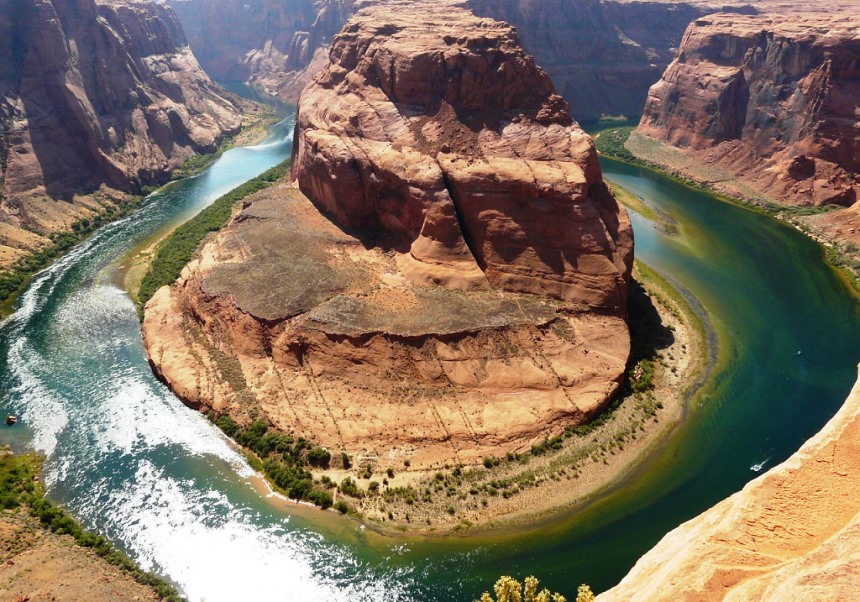On July 20, 2021, a new report issued by seven environmental non-profit organizations examines ten strategies to bolster climate resilience and mitigate the impact of climate change in the Colorado River Basin, which is currently grappling with a historic megadrought.
A crucial source of water for over 40 million people—not to mention billions of plants and animals, many of them already threatened or endangered—the Colorado River is facing severe declines in stream flows and a looming federal shortage declaration as a result of a decades-long drought and increasing temperatures.
The strategies analyzed in the report have the potential to help communities adapt to, respond to, and mitigate the steady, compounding, and extreme risks of climate change to economies, communities, landscapes, and the water resources that support them.
The report, titled “Ten Strategies for Climate Resilience in the Colorado River Basin,” is authored by Martin & McCoy and Culp & Kelly, LLP with contributions from American Rivers, National Audubon Society, Environmental Defense Fund, Theodore Roosevelt Conservation Partnership, The Nature Conservancy, Trout Unlimited, and Western Resource Advocates.
“Additional approaches are needed to help our communities directly and holistically tackle the risks of climate change to the Colorado River – and the economies, communities, and ecosystems that rely on it,” said Kevin Moran, Senior Director of the Colorado River Program at the Environmental Defense Fund.
“The strategies outlined in this report represent our best means of building resilience and staving off the worst effects of the devastating climate crisis,” he added.
It examines ten climate resilience strategies ranging from the well-demonstrated, to the emerging, to theoretical but largely untested concepts, and assesses how each strategy would bolster the Basin’s climate resilience in multiple ways, from reducing pressure on existing water supplies to strengthening economic resilience in surrounding communities.
The report further explores the near-term next steps to moving the ten investment strategies forward, including demonstration projects and investments, supportive financing, and action-oriented research to monitor and track project implementation.
“As we face another summer of drought and fire, we are already seeing what our future could look like if we continue with business-as-usual,” said Nancy Smith, Conservation Director at The Nature Conservancy’s Colorado River Program.
“The scale and pace of climate-related changes in the Colorado River Basin pose an increasing risk to the reliability of our water supplies – and we do not have time to waste. This report offers a crucial and solutions-oriented approach that will help us bolster climate resilience and safeguard our future water supplies,” she continued.
The resulting top 10 investment strategies for a more resilient future are:
- Forest Management & Restoration – Prioritizing forest management and restoration to maintain system functionality and biodiversity;
- Natural Distributed Storage – Restoring highly degraded natural meadow systems to improve local aquifer recharge, water retention, reconnect historic floodplains, and support productive meadows and riparian ecosystems;
- Regenerative Agriculture – Promoting voluntary farming and ranching principles and practices that enrich soils, enhance biodiversity, restore watershed health, and improve overall ecosystem function and community health;
- Upgrading Agricultural Infrastructure & Operations – Upgrading diversion, delivery and on-farm infrastructure and operations, including irrigation systems;
- Cropping Alternatives & New Market Pathways – Developing on-farm operational shifts and market and supply chain interventions to incentivize water conservation, e.g. shifting to lower water-use crops;
- Urban Conservation & Re-Use – Incentivizing conservation technologies, indoor and outdoor conservation programs, and direct and indirect potable reuse;
- Industrial Conservation & Re-Use – Incentivizing modifications and upgrades to reduce water use and increase energy efficiencies;
- Coal Plant Retirement Water – Purchasing or reallocating water rights from closed or retiring coal plants to be used for system or environmental benefits, or other uses;
- Reducing Dust on Snow – Improving land management practices to reduce the dust on snow effect — which controls the pace of spring snowmelt that feeds the headwaters of the Colorado River; and
- Covering Reservoirs & Canals – Implementing solutions to reduce evaporation from reservoirs and conveyance systems.
The full report outlines, in detail, not just the near-term next steps for moving these strategies forward but includes demonstration projects, investments and action-oriented research.
But it’s important to emphasize that these strategies can’t be implemented in a silo. “I” doesn’t work in these conditions. We all rely on rivers, and water, and their continued existence.
Our ability to count on them well into the future will be dependent upon our willingness to develop cross-sector partnerships and basin-wide funding for these investments that can be cohesively implemented at a scale commensurate to the challenge. Local, state, and tribal governments must be on board. Our private land partners need voluntary measures and incentives, not mandates.
And we can’t wait for calls on the river, fallowed fields, and dry stretches to act. These investments in climate resilience for the Colorado River are needed now.
Photo of Colorado River’s Horseshoe Bend by Hans Braxmeier from Pixabay.

